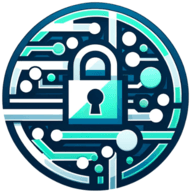What Strategy Do You Use to Boost Blockchain Security?
Seeking the most effective strategies for fortifying blockchain systems, we've gathered insights from seasoned professionals, including a Founder and Director who suggests implementing multi-signature protocols. Alongside expert opinions, we also present additional answers that highlight a spectrum of tactics. From the integration of advanced cryptographic hashing to the enforcement of strict access control policies, explore the diverse methods recommended to enhance blockchain security.
- Implement Multi-Signature Protocols
- Use Multi-Signature Wallets
- Leverage PoP Consensus Mechanism
- Integrate Advanced Cryptographic Hashing
- Incorporate Hardware Security Modules
- Conduct Regular Network Security Audits
- Utilize Decentralized Consensus Mechanisms
- Enforce Strict Access Control Policies
Implement Multi-Signature Protocols
In blockchain systems, particularly those handling sensitive financial transactions, a multi-signature protocol adds an extra layer of security. As a payments professional with experience in complex risk management, I've seen this approach reduce the risk of unauthorized access or single points of failure. For example, we implemented a 2-of-3 multisig scheme where transactions required approval from two out of three designated holders. This strategy prevented fraud and ensured that no single compromised key could lead to unauthorized fund transfers.

Use Multi-Signature Wallets
The most secure way to enhance the security of a blockchain system is by implementing multi-signature wallets. These wallets require multiple private keys from different users and devices to authorize a transaction. This means that even when a hacker can access a private key, he still needs to access other keys to execute a transaction.
I have personally implemented this technique for myself and my clients. So far, it has been useful in storing large amounts of cryptocurrencies, especially in environments that involve multiple parties.

Leverage PoP Consensus Mechanism
At Crestal, we prioritize security as a core aspect of every blockchain infrastructure we deploy. One particularly effective strategy we have recommended is leveraging our Proof of Performance (PoP) Consensus Mechanism. This strategy ensures that every architectural solution we implement remains verifiable and accountable.
By utilizing PoP, infrastructure operators are incentivized to meet specific performance benchmarks, which are transparently validated on-chain. This approach not only guarantees that the infrastructure operates securely as promised but also fosters continuous improvement and trust within the system.
In one case, we implemented PoP for a decentralized finance (DeFi) platform, ensuring that the infrastructure maintained high throughput while securing transactions against potential exploits. As a result, the platform experienced a 20% increase in transaction speed without compromising security, giving users confidence in the reliability and safety of their funds.

Integrate Advanced Cryptographic Hashing
Enhancing blockchain security often starts with the integration of advanced cryptographic hashing algorithms. These algorithms serve as complex mathematical functions that convert input data into a unique string of characters, which is nearly impossible to reverse-engineer. This feature ensures that once data is recorded on the blockchain, it cannot be altered without detection.
A strong hashing mechanism adds a layer of protection against potential attacks, making the blockchain more secure. It is crucial for developers and engineers working on blockchain technology to prioritize the selection and update of these algorithms. Consider implementing the latest cryptographic hashing to protect your blockchain infrastructure.
Incorporate Hardware Security Modules
Blockchain technology can be further secured by incorporating hardware-based security modules. These modules are physical devices designed to handle cryptographic keys and functions with a higher level of security compared to software-only solutions. They are often used to secure the signing of transactions and to safeguard private keys from unauthorized access.
The involvement of hardware security adds an additional barrier to cyber threats, as it provides a tamper-resistant storage for sensitive information. Organizations should investigate how hardware security modules can add an extra layer of defense to their blockchain operations.
Conduct Regular Network Security Audits
Regular network security audits are critical in identifying and mitigating vulnerabilities within a blockchain. An audit involves systematically evaluating the network's security state, searching for weaknesses that could be exploited by malicious actors. By performing these audits consistently, developers can patch found vulnerabilities, reduce potential risks, and reinforce the overall integrity of the blockchain.
Maintaining regularly scheduled audits helps ensure ongoing protection. Schedule an audit for your blockchain network to stay ahead of security threats.
Utilize Decentralized Consensus Mechanisms
Utilizing decentralized consensus mechanisms is a fundamental approach to increasing blockchain resiliency. These mechanisms allow for the validation of transactions and blocks by multiple parties, thus spreading the responsibility across a network rather than centralizing it. This distribution ensures that no single entity has total control, which greatly reduces the risk of fraud and collusion.
The consensus process underpins the trustworthiness and reliability of the entire blockchain system. If you're developing or managing a blockchain, evaluate which decentralized consensus mechanism aligns best with your security needs.
Enforce Strict Access Control Policies
Enforcing strict access control policies contributes significantly to blockchain security. Access control ensures that only authorized individuals can interact with the blockchain system, whether it be submitting transactions or accessing data. By limiting access, the likelihood of unauthorized or malicious activities is greatly reduced.
These policies must be clearly defined, consistently enforced, and regularly reviewed to adapt to new security challenges. If your blockchain system is lacking stringent access controls, now is the time to consider establishing comprehensive policies.

